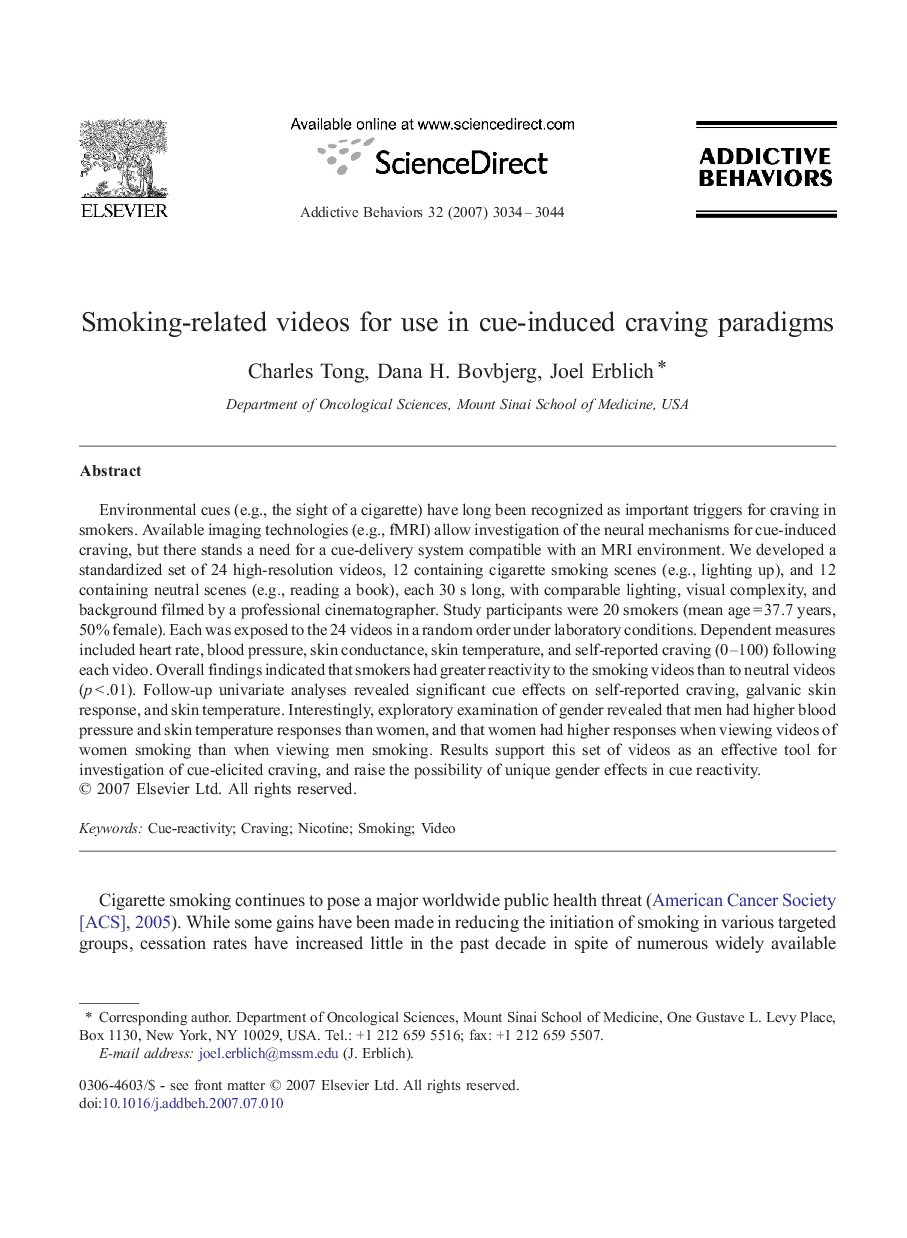| Article ID | Journal | Published Year | Pages | File Type |
|---|---|---|---|---|
| 900050 | Addictive Behaviors | 2007 | 11 Pages |
Environmental cues (e.g., the sight of a cigarette) have long been recognized as important triggers for craving in smokers. Available imaging technologies (e.g., fMRI) allow investigation of the neural mechanisms for cue-induced craving, but there stands a need for a cue-delivery system compatible with an MRI environment. We developed a standardized set of 24 high-resolution videos, 12 containing cigarette smoking scenes (e.g., lighting up), and 12 containing neutral scenes (e.g., reading a book), each 30 s long, with comparable lighting, visual complexity, and background filmed by a professional cinematographer. Study participants were 20 smokers (mean age = 37.7 years, 50% female). Each was exposed to the 24 videos in a random order under laboratory conditions. Dependent measures included heart rate, blood pressure, skin conductance, skin temperature, and self-reported craving (0–100) following each video. Overall findings indicated that smokers had greater reactivity to the smoking videos than to neutral videos (p < .01). Follow-up univariate analyses revealed significant cue effects on self-reported craving, galvanic skin response, and skin temperature. Interestingly, exploratory examination of gender revealed that men had higher blood pressure and skin temperature responses than women, and that women had higher responses when viewing videos of women smoking than when viewing men smoking. Results support this set of videos as an effective tool for investigation of cue-elicited craving, and raise the possibility of unique gender effects in cue reactivity.
